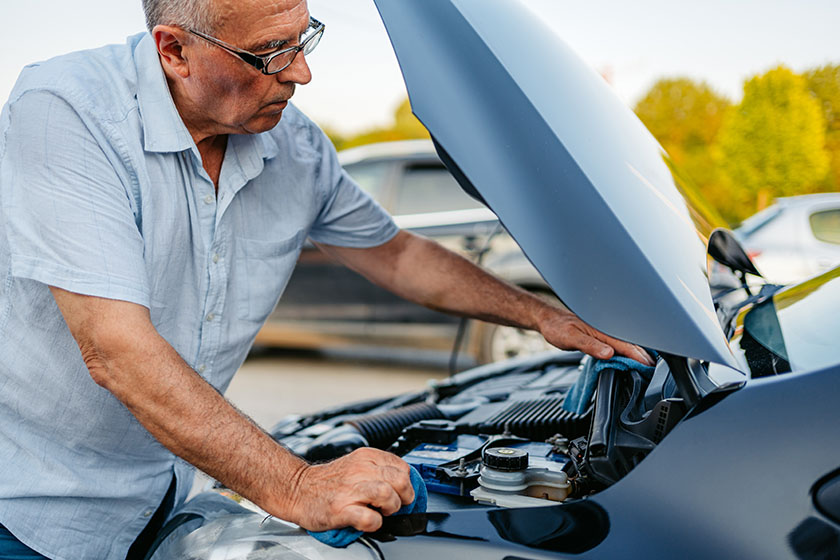New Year’s Eve driving behavior trends 2025 Read article


Recently, the Auto Care Association asked Arity to speak about how businesses, specifically auto aftermarket businesses, can adapt to changing mobility patterns across the U.S. They were not interested in anecdotes, rather concrete, real-time mobility data to answer some big questions weighing on people’s minds.
The industry wants to know: How has Covid-19 influenced total miles driven? Is driving back to normal? Have driving behaviors changed? What can auto aftermarket companies — from oil service centers to tire manufacturers — do to rapidly adapt to and evolve with any shifting driving behaviors?
About everyone has noticed that the roads are more full than they were throughout 2020, but does that mean it is business as usual? Not quite.
With more than 30 million active telematics connections, Arity has processed more than 600 billion miles of driving data (as of 2021) — and counting — to date. Our data shows that, due to the pandemic, one in two people are not commuting regularly to work anymore. And public transit use has decreased by 50%.
But obviously, that is not the whole story, or we would not be seeing so much traffic.
[Driving] behaviors continue to change. The ability to understand these changing behaviors in advance month after month, year after year can drastically impact how well – or not so well – business locations perform.
Turns out, total miles driven is way up … and not just compared to 2020. It is even higher than 2019.
This should cause a cheer from the auto aftermarket industry because more miles driven means more vehicle wear and tear, more parts needed, more oil changes, more tune-ups, more tire maintenance, and more general purchases. It would seem like we are back to normal and then some! But wait.
Data also shows that people are driving faster than before and there are fewer hard braking events. During 2020, data showed drivers spending a good amount of time driving faster than 80 miles an hour. In 2021, speeds are still up compared to 2019, but not as high for as long.
Hard braking is not always caused by poor driving; in fact, it is usually caused by driving on crowded roads. When data shows that people are driving slower than usual and there is a lot of braking, it usually means there is a lot of traffic.
Today, fewer daily work commuters, more fast driving, and less braking adds up to fewer drivers on the road. So, miles might be up, but the number of drivers on the road is down.
What does this mean for your auto service or parts business? You probably have a few ideas already, but before you make any decisions, consider this: so far in this article, we have only showcased an aggregated view of the U.S. An aggregated view does not answer some of auto aftermarket’s most important planning quesitons – Which warehouse is most cost-effective to store your inventory? Also, if you have 100 auto aftermarket service centers on the west coast and only in metro areas, does this aggregate data apply to where your business operates?
The answer is found in the more granular Arity driving and mobility data.
Let us compare large metro areas to large suburban and small suburban areas. One theory is that now that more people can work from home, they are moving out of large metro areas and into more suburban areas. If that is true, we should see a bigger spike in the number of drivers in more suburban counties than in metro areas.
The data shows that that is true; although total miles driven is up across large and small counties, the smaller the suburban area, the more we are seeing a difference. Here are the numbers:
Of course, this data is not flat. We are seeing trends in different areas at different times. For example, for about three weeks in May 2021, we saw a spike in the number of drivers in Orange, Florida. An overall spike in drivers in the spring is not particularly unusual – it is likely vacationers hitting the road to beach destinations who do not typically get an oil change or need other auto services while in the area.
Without Arity to split out miles driven by local Orange residents from miles driven by visitors, retailers end up over-inflating local store inventory and staffing levels, and thus lose money. Arity not only spotted the spike in drivers immediately but normalized the data and delivered insights like resident miles driven to our clients within 72 hours. This gives better notice of a seasonal behavior trend you can act on.
In another example, we looked at total miles driven by time of day. Compared to 2019 and 2020, driving at night and during the mid-day peaked, especially during the summer months.
What does all this data mean for your business, in your specific location, and for your target customer? Let’s say you have a storefront in Yuma, Arizona and one in Philadelphia, Pennsylvania. What is the impact at point of sale (PoS) to the migration of drivers and mileage?
In Yuma, we are seeing an uptick in drivers and more resident drivers, and they are driving more miles. The numbers per driver do not seem all that big, but the net impact is huge. We’re talking about 42,000 new drivers accumulating on average 8,100 resident miles per year. When considering only residents, this adds up to potentially 68,065 oil changes (4.7% more than in 2019) and 2.4 million more total miles driven, equating to 114,00 gallons of gas (13% more than in 2019 based on 21 MPG).
More miles in Yuma means drivers needing more frequent oil changes, more frequent gas station stops, and more tire and vehicle maintenance needs. It means more inventory and more staff support is needed locally to support this increase, which can be a challenge when the supply chain has been disrupted by Covid-19 and there’s a worker shortage. Planning is crucial to to successfully fulfill these increased opportunities for revenue.
On the flip side, you also have a storefront in Philadelphia. There are one-million fewer drivers on the road compared to 2019, and 4.4 million fewer resident miles driven per week. Still, miles driven overall are up slightly, about 11.7 miles per day on average compared to 10.88 in 2019.
What’s the net impact of this to your business in Philadelphia? You will see 223,000, or 11% less, fewer oil changes than in 2019, 210 thousand fewer gallons of gas purchased each week, or about 4.5% fewer gallons than in 2019. This means fewer service stops, less shopping, and fewer parts and repairs needed.
For each auto service center or retail store, you will need a distinct strategy to optimize inventory and staffing to reflect the needs of the drivers’ changing behaviors in the area. And as we keep seeing, the behaviors continue to change. The ability to understand these changing behaviors in advance month after month, year after year can drastically impact how well – or not so well – business locations perform.
The good news is, there are a few simple steps to take to stay on top of the constantly evolving driver behavior changes and ahead of your customers’ automotive care needs. We have created a checklist for you to get started.
Gaining access to near real-time data in the areas that matter to your business most can lead to better predicting and servicing immediate customer needs, thus giving you the ultimate competitive advantage. Compared to the store across the street, you will know exactly when and where to boost staffing and inventory and serve your customers without lengthy wait times.